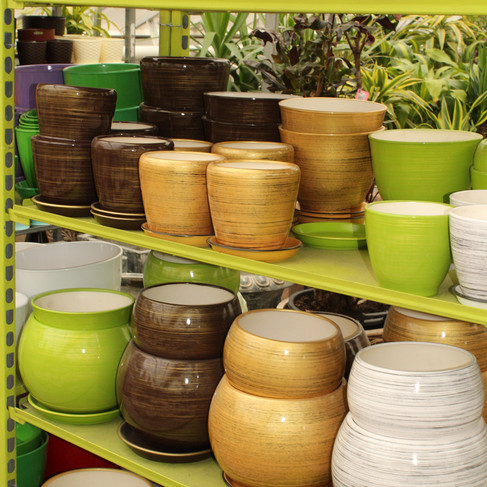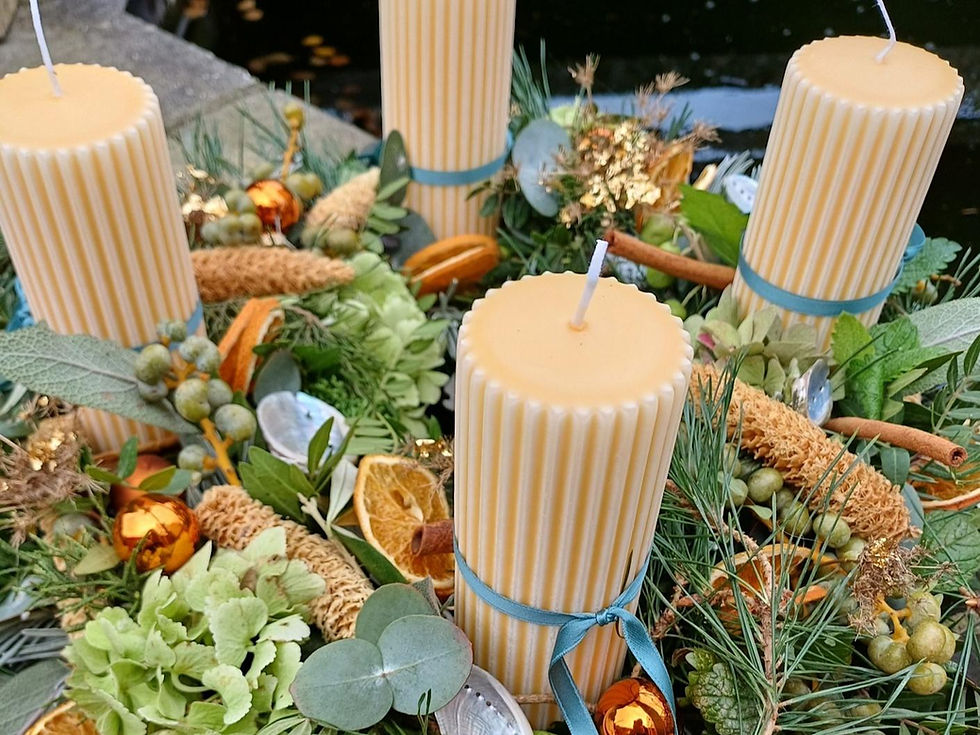How Trend Directions are Created
- Karen Barnes

- Aug 7
- 3 min read
Creating trend directions in the floral industry — which includes fresh flowers, floral design, home décor, fashion, and event styling — relies on a combination of cultural analysis, seasonal cycles, design forecasting, and global influences.
In the UK, trend directions for florists are shaped through a structured yet creative process, influenced by global and local factors, and are designed to help florists stay commercially relevant, visually fresh, and aligned with consumer demand.
There are a number of global trend agencies that I work with to understand overarching lifestyle and design trends. Trend direction plays an integral part in influencing design, colour and texture in our floral industry.

Floral trends offer a starting point or theme, helping florists innovate within structured ideas, colour palettes, design, and themes. This supports both artistic expression and consistency across retail, weddings, and installations. Consideration is given on macro trends such as sustainability, biophilia, nostalgia, and they are then translated into colour palettes, design shapes, and textures for the floral industry.
These trends are adapted to British tastes for florists, considering local colour preferences, seasonal flowers, and cultural traditions for example Mother’s Day, Remembrance Day poppies, Easter lilies, and other occasions that are becoming very popular.
Influencers, floral artists, and major event stylists also help set the tone by showcasing fresh ideas on social media. Recent examples are of floral cloud installations and meadow style bouquets inspiring everyday florists that have been seen on Pinterest, Instagram and TikTok. Trend-setting UK florists often lead with unique colour palettes and sustainable styling, becoming influencers, gathering followers and pushing a particular style as the ‘next trend’.

Colour trends often originate from the fashion industry showcasing ‘new’ looks through huge fashion show weeks in capital cities around the world such as London, New York, Milan, Tokyo, Paris (the list goes on!). Interior design shows also have an influence on what can be a future trend. Once a consumer sees a particular look, a design, a colour combination and a finish, they want to see this is their homes or their businesses and this then filters down into floral design and planting. For example, post-Covid, themes of healing and nature brought trends like soft pastels, wildflower arrangements, and meadow-style florals.
Pantone’s Colour of the Year has always been an influence in our floral industry as colour is so important, but I have found that particularly in the past five years, the Pantone Institute have really set the bar in how they promote their Pantone Colour of the Year. They market and promote exceptionally well, showcasing their Colour of the Year by launching it 6 months before the year starts and then promote at fashion design shows, home décor shows and floral industry shows.
Trade fairs like IPM Essen, Maison & Objet, and RHS Chelsea Flower Show showcase innovation. Wholesalers, florists, and growers attend these shows to spot product trends, design techniques, and colour stories. These colour stories then filter into floral selection with growers and designers, who then favour blooms that match or complement the trending palette.

Major events like the Olympics, World Expos, or even economic shifts influence design moods. Social movements such as sustainability and climate change also influence trend directions; a good example is embracing native plants, locally grown flowers and foam-free installations.
Florists can often take cues from bridal trends and luxury event stylists, and I find that when I am working with large event companies, particularly on destination weddings, I can pick up on trends and ideas that have not reached our British shores and run with them, adapt them and create trend directions for the following season. Trend reports (often issued 6–12 months ahead) allow florists time to prepare for seasons like Christmas, the Wedding season, Valentine’s Day and Mother’s Day.
Example of a Mood Board Trend Direction


With over 35 years’ experience, Karen Barnes is one of the UK’s leading consultants to the floral industry and an expert in product development, future trends & colours, and floral photography design & planning. She’s an interior floral designer, high profile wedding and event floral planner, and prominent international competition judge.In a distinguished career, Karen has been awarded gold medals at the RHS Chelsea Flower Show, selected to judge two Floral Design World Cups and been voted one of the top ten florists in the UK by The Independent on Sunday Newspaper.Her style and influences come from new and popular flower varieties, fashion, art, travel and emerging trends on a global scale.Karen Barnes NDSF, IoPF, AIFD, CFD, CAFA, UKFJG












